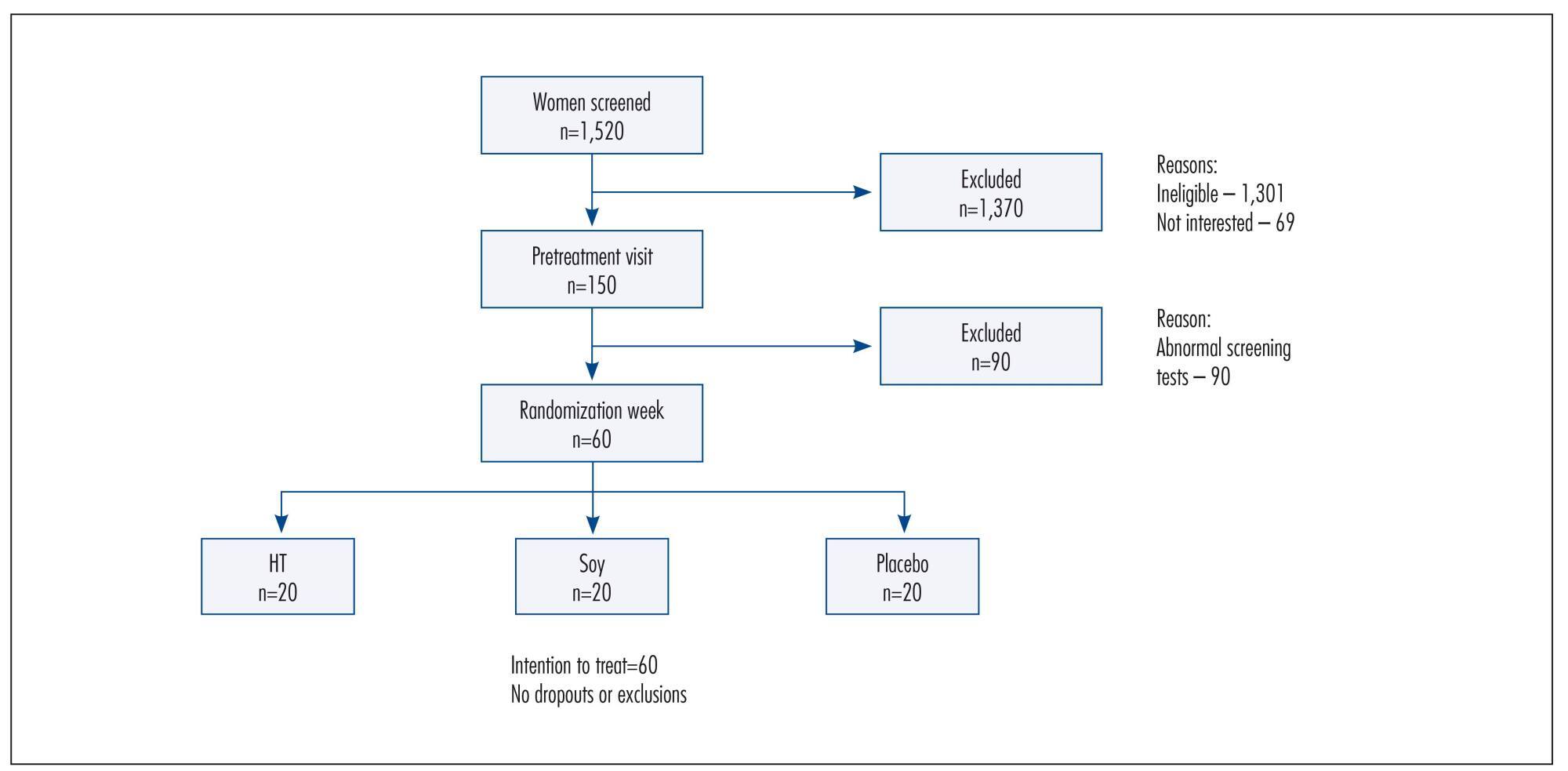-
Review Article
The Effectiveness of Herbal Medicines on Cyclic Mastalgia: A Systematic Review on Meta-analysis
Revista Brasileira de Ginecologia e Obstetrícia. 2022;44(10):972-985
01-23-2022
Summary
Review ArticleThe Effectiveness of Herbal Medicines on Cyclic Mastalgia: A Systematic Review on Meta-analysis
Revista Brasileira de Ginecologia e Obstetrícia. 2022;44(10):972-985
01-23-2022Views196See moreAbstract
Objective
Different drugs are used to treat mastalgia, such as danazol and bromocriptine, and both are associated with side effects, due to which most of women and healthcare providers are interested in herbal medicines. Therefore we aim to study the effectiveness of phytoestrogens on the severity of cyclic mastalgia.
Methods
To carry out the present study, English electronic resources such as the Cochrane Library, ISI Web of Science, Scopus, and PubMed were used systematically and with no time limitation up to February 10, 2020.
Results
In total, 20 studies were included in the present meta-analysis. The results of the meta-analysis showed that herbal medicines versus the control group (standard mean difference [SMD] = - 0.585; 95% confidence interval [CI]: - 0.728–- 0.44; heterogeneity; p = 0.02; I2 = 42%), herbal medicines versus the B group (SMD = - 0.59; 95%CI: - 0.75–- 0.44; heterogeneity; p = 0.03; I2 = 42%), and its subgroups, such as phytoestrogen (SMD = - 0.691; 95%CI: - 0.82–- 0.55; heterogeneity; p = 0.669; I2 = 0%), Vitex-agnus-castus (SMD = - 0.642; 95%CI: - 0.84–- 0.44; p < 0.001; p = 203; I2 = 32%), flaxseed (SMD = - 0.63; 95%CI: - 0.901–- 0.367; p = 0.871; I2 = 0%), and evening primrose (SMD= - 0.485; 95%CI:- 0.84–- 0.12; p = 0.008; heterogeneity; p = 0.06; I2 = 56%] may have effective and helpful effects on improving cyclic breast mastalgia. Also, chamomile, isoflavone, cinnamon, and nigella sativa significantly reduced mastalgia symptoms.
Conclusion
Herbal medicines and their subgroups may have effective and helpful effects on improving cyclic breast mastalgia. The findings of our meta-analysis must be done cautiously because low methodological quality in some evaluated studies of this systematic review.
-
Artigos Originais
The effect of soy dietary supplement and low dose of hormone therapy on main cardiovascular health biomarkers: a randomized controlled trial
Revista Brasileira de Ginecologia e Obstetrícia. 2014;36(6):251-258
06-01-2014
Summary
Artigos OriginaisThe effect of soy dietary supplement and low dose of hormone therapy on main cardiovascular health biomarkers: a randomized controlled trial
Revista Brasileira de Ginecologia e Obstetrícia. 2014;36(6):251-258
06-01-2014DOI 10.1590/S0100-720320140004976
Views124PURPOSE:
To assess the effects of a soy dietary supplement on the main biomarkers of cardiovascular health in postmenopausal women compared with the effects of low-dose hormone therapy (HT) and placebo.
METHODS:
Double-blind, randomized and controlled intention-to-treat trial. Sixty healthy postmenopausal women, aged 40-60 years, 4.1 years mean time since menopause were recruited and randomly assigned to 3 groups: a soy dietary supplement group (isoflavone 90mg), a low-dose HT group (estradiol 1 mg plus noretisterone 0.5 mg) and a placebo group. Lipid profile, glucose level, body mass index, blood pressure and abdominal/hip ratio were evaluated in all the participants at baseline and after 16 weeks. Statistical analyses were performed using the χ2 test, Fisher's exact test, Kruskal-Wallis non-parametric test, analysis of variance (ANOVA), paired Student's t-test and Wilcoxon test.
RESULTS:
After a 16-week intervention period, total cholesterol decreased 11.3% and LDL-cholesterol decreased 18.6% in the HT group, but both did not change in the soy dietary supplement and placebo groups. Values for triglycerides, HDL-cholesterol, glucose level, body mass index, blood pressure and abdominal/hip ratio did not change over time in any of the three groups.
CONCLUSION:
The use of dietary soy supplement did not show any significant favorable effect on cardiovascular health biomarkers compared with HT. Clinical Trial Registry: The trial is registered at the Brazilian Clinical Trials Registry (Registro Brasileiro de Ensaios Clínicos - ReBEC), number RBR-76mm75.
Key-words Biological markersEstrogen replacement therapyLipid profileMenopausePhytoestrogensPlacebosRisk factorsSoy foodSee more
-
Artigos Originais
Cardiomyocytes morphology and collagen quantification in the myocardium of female rats treated with isoflavones or estrogens
Revista Brasileira de Ginecologia e Obstetrícia. 2012;34(10):447-452
12-20-2012
Summary
Artigos OriginaisCardiomyocytes morphology and collagen quantification in the myocardium of female rats treated with isoflavones or estrogens
Revista Brasileira de Ginecologia e Obstetrícia. 2012;34(10):447-452
12-20-2012DOI 10.1590/S0100-72032012001000003
Views86See morePURPOSES: To evaluate the histomorphometry of cardiomyocytes and collagen present in the myocardium of rats treated with a concentrated extract of soy or 17β-estradiol (E2). METHODS: Twenty-eight rats were divided into four groups: GCtrl - estrus phase; GOvx - ovariectomized (Ovx) and receiving vehicle; GIso - Ovx and treated with soy extract (150 mg/kg per day); GE2 - Ovx and treated with E2 (10 µg/kg per day). The drugs and vehicle (0.2 mL propylene glycol) were administered for 30 consecutive days after ovariectomy. On the last day the animals were anesthetized, the hearts removed, submerged in 10% formaldehyde and fragments of the ventricles underwent histological procedures, and the sections were stained with hematoxylin and eosin or picrosirius-red. Histomorphometric analysis (number and volume of nuclei and quantification of collagen) was performed under a light microscope with AxioVision Rel. 4.2 software, and collagen fibers were quantified using IMAGELAB-2000 software. Data were submitted to ANOVA followed by the Tukey test (p<0.05). RESULTS: We observed a higher number of cardiomyocyte nuclei in animals of the Ovx and Iso groups than in GE2 and GCtrl animals (GOvx=121.7±20.2=GIso=92.8±15.4>GE2=70.5±14,8=GCtrl=66.3±9.6; p <0.05), while the nuclear volume was greater in the Ctrl and E2 groups (GE2=35.7±4.8 GCtrl=29.9±3.6=>GIso=26.5±4.5=GOvx=22.4±2.9; p <0.05). Collagen concentration was higher in the Ovx group (GOvx=5.4±0.1>GCtrl=4.0±0.1=GIso=4.4±0.08=GE2=4.3±0.5; p <0.05). CONCLUSIONS: Estrogen may prevent the reduction of the nuclear volume of cardiomyocytes and collagen deposition between heart muscle fibers, while the administration of isoflavones only prevents the deposition of collagen, which can preserve the mechanical properties of cardiac fibers.


